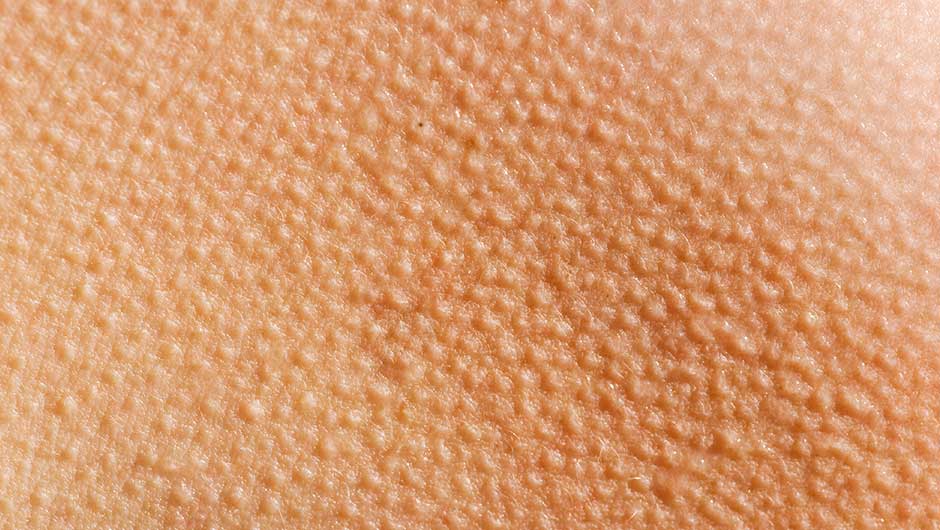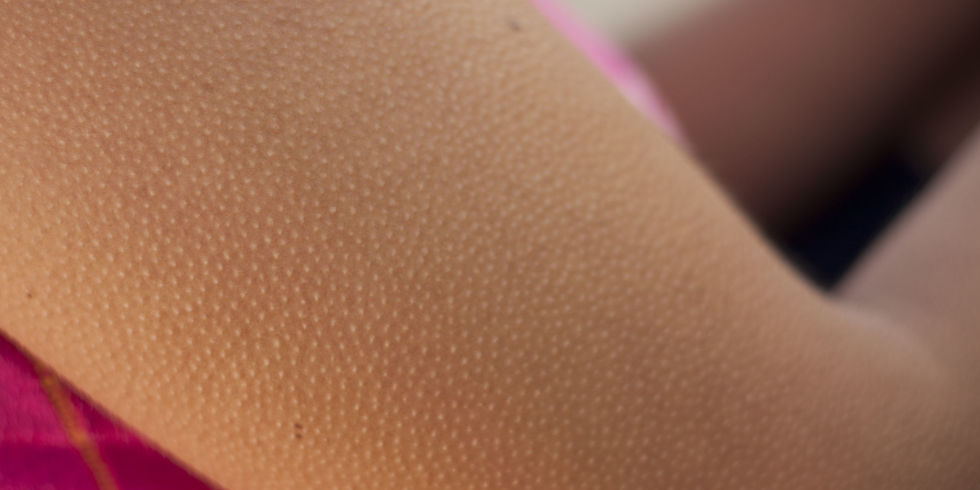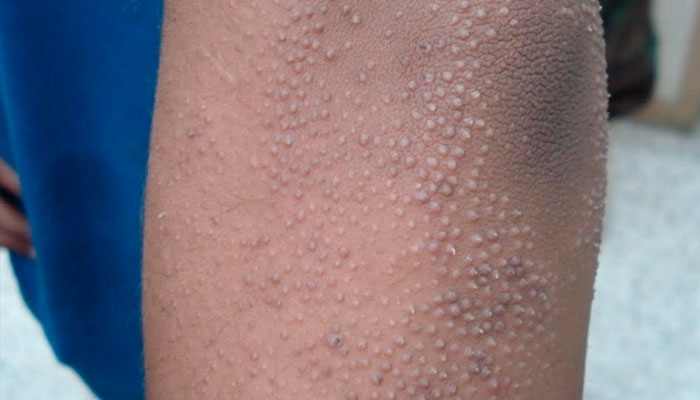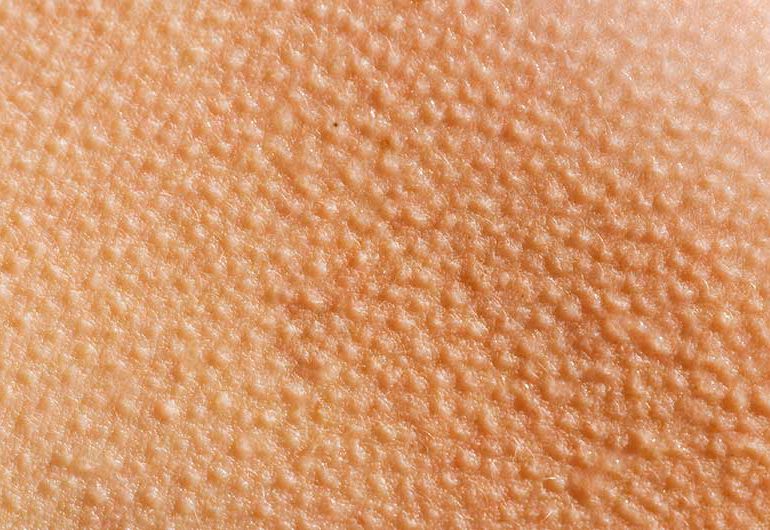
Keratosis pilaris is a common, harmless skin condition. It causes small, hard bumps that may make your skin feel like sandpaper.
The bumps are often light-colored. They usually appear on your upper arms, thighs, and buttocks, sometimes with redness or swelling. They can also show up on your face, but that's less common.

Except for some itching, keratosis pilaris doesn't hurt and doesn't get worse. Many children and teens get it, and it usually disappears as they get older.
Cause
Keratosis pilaris is caused by a buildup of keratin, the protein that protects skin from infections and other harmful things. The buildup forms a plug that blocks the opening of a hair follicle, but doctors don't know what triggers the buildup.
If you have dry skin, you're more likely to have keratosis pilaris. It's usually worse in the winter months, when there's less moisture in the air, and then may clear up in the summer.
It often affects people with certain skin conditions, including eczema (also called atopic dermatitis).
Your doctor can diagnose keratosis pilaris by looking at your skin. You don't need to be tested for it.

What You Can Do
You can't prevent keratosis pilaris, but you can keep your skin moist to lessen its effects.
Some simple things can help keep your skin comfortable.
- Don't scratch at the bumps or rub your skin roughly.
- Use warm water rather than hot for bathing and showering.
- Limit your time in the water.
- Try soap that has added oil or fat.
- Use thick moisturizers generously on the skin.
- Add moisture to the air in your home with a humidifier.
Treatment

There's no cure for keratosis pilaris. But moisturizing lotions or creams may help your skin look and feel better. A variety of these are available over the counter, but you'll need a prescription for stronger versions.
Two types of products that go directly on the affected skin often improve keratosis pilaris. You'll need to use them daily for several weeks before you'll see a change. You should follow the suggestions above, too, for long-lasting results.
Topical exfoliants remove dead skin cells from the surface of your skin. These include creams that contain alpha-hydroxy acid, lactic acid, salicyclic acid, or urea.
The acids may cause redness or a slight burning, so they aren't recommended for young children.
Topical retinoids, related to vitamin A, help prevent hair follicles from getting plugged. These include products with the ingredients tretinoin (Avita, Renova, and Retin-A) and tazarotene (Avage and Taxorac). But topical retinoids may irritate your skin or cause redness or peeling.
Women who are pregnant, nursing, or may become pregnant should avoid topical retinoids.

Dr. Mark Sieffring
Laser treatment — aiming a laser onto the skin — is sometimes used to treat severe redness and inflammation. It isn't a cure, but it may provide some relief when creams and lotions aren't enough. You might need several sessions for this treatment to work.
Source WebMD
Stamford Skin Centre
99 Suong Nguyet Anh, Dist. 1, HCMC
028 3928 1990 – 0919 736 990
www.stamfordskin.com
